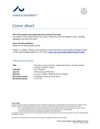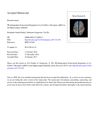Search
forLearn
5 / 5 resultslearn sh-Polypeptide-7
learn Neem Oil
natural substance from Neem tree with medicinal and pesticidal properties
learn Osteopontin
signaling protein that, when suppressed, may grow hair by reducing inflammation and stem cell loss
learn Epidermal Growth Factor
Research
5 / 1000+ resultsresearch Female Gender Scheme Is Disturbed by Polycystic Ovary Syndrome: A Qualitative Study from Iran
Polycystic Ovary Syndrome (PCOS) affects Iranian women's feelings of femininity and self-image.

research Polycystic Ovary Syndrome, Medical Semantics, And The Political Ecology Of Health In India
PCOS in India is linked to broader sociocultural and environmental changes, not just diet and exercise.

research Distinctive Features of Steroid Hormone Metabolism in Female Patients with Androgenic Alopecia
Women with hair thinning have disrupted steroid hormone levels, but this doesn't often show as other health issues. More research is needed on hormone balance in this condition.

research Secondary Amenorrhea: Causes, Diagnosis, and Treatment
Secondary amenorrhea has many causes and requires thorough evaluation to treat and restore menstrual cycles.

research Progesterone-Independent Neurosteroid Regulation of Alpha2-GABA-A Receptors in the Hippocampus Subfields
Progesterone and its byproducts control a specific receptor in the brain independently of progesterone receptors, affecting conditions related to the menstrual cycle.
Community Join
5 / 163 resultscommunity Finasteride - impact on Neurosteroids, which yes, \are important and not a garbage hormone
Finasteride may affect neurosteroids, impacting mood and sexual function, with varied user experiences. Some report side effects like depression and sexual dysfunction, while others find it effective for hair retention or prefer alternatives like Dutasteride or topical treatments.
community 1 Month on Dutasteride (0.5mg) + Supplements – Seeing Thickness But No New Hairs Yet. Is That Normal?
A 31-year-old woman is using Dutasteride (0.5mg daily) and supplements like a multivitamin, Herbadal, pumpkin seed oil, and vitamin D for genetic hair loss, noticing thicker hair but no new growth after one month. She is considering adding minoxidil and is aware of Dutasteride's risks, especially regarding pregnancy.
community Could Eating disorders induce secondary effects on finasteride?
A user experienced a loss of libido and anhedonia after severe dietary restriction while on Finasteride and Minoxidil for hair loss. They are considering reducing the Finasteride dose or taking a break to see if symptoms improve.

community Hair Loss Worsened After Switching From Arimidex to Raloxifene, Despite Dutasteride
Switching from Arimidex to Raloxifene worsened hair loss despite using Dutasteride. The user added oral Minoxidil, dermastamping, and RU58841 to their regimen to address the issue.
community SCUBE3 and GT20029 could be the closet thing to a cure: Hair Follicle Regeneration and Protection Against DHT
SCUBE3 and GT20029 are potential treatments for hair loss, with SCUBE3 stimulating hair growth and GT20029 protecting against DHT. A combined approach using SCUBE3, finasteride or dutasteride, and later GT20029 could provide a comprehensive treatment for androgenetic alopecia.